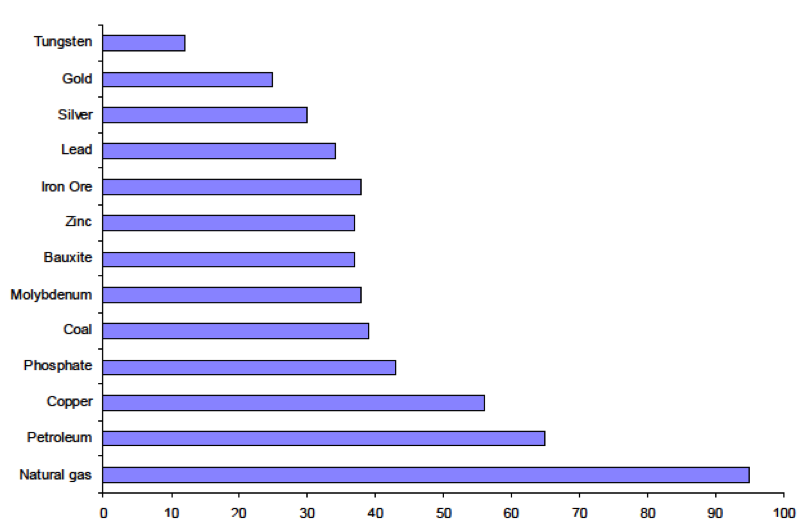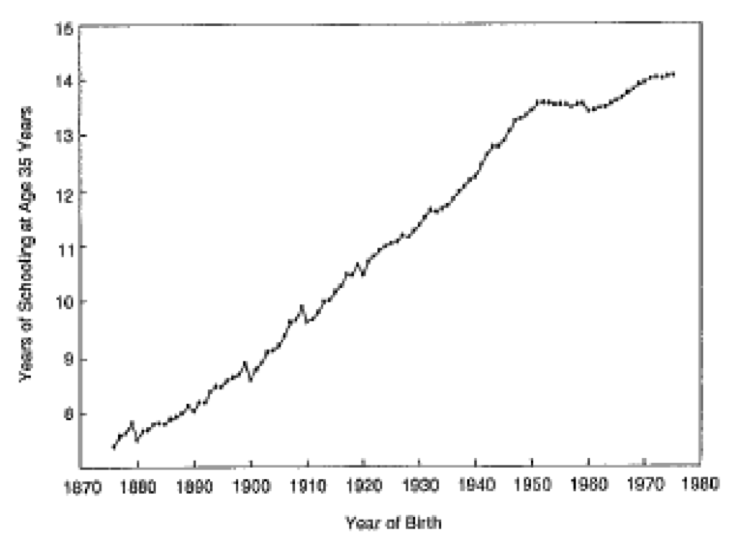The Rise of the US
Posted on 10 September 2014
Why did the US become the world’s most powerful nation?
In the last two centuries, the United States of America has become the most powerful nation in the world by making its transition from an agriculture based economy to an industrial nation. In the first part of the 19th century, the country’s GDP grew approximately 4% per year but GDP per capita just increased by 0.5%. This can be explained by the growth in population and increased working hours. As of 1890, productivity improvements induced both an increase in GDP and GDP per capita and labour conditions improved. By the middle of the 20th century, the US was producing approximately 45% of the world’s industrial output. As a result, the US became the world’s leader in GDP per capita; furthermore, the gap in GDP per capita between the US and other developed countries, such as Britain, increased. Moreover, the US was known for its mass production which is often linked to Ford’s famous quote: “Any customer can have a car painted any colour that he wants as long as it is black”. There were several drivers behind the rise of the United States, mainly attributed to economic development; in other words, rise of material well-being.
Since the discovery of the USA, it has been known by its abundance of natural resources such as oil, coal, and iron In 1913 it became the world leader in the production of several resources as shown in figure 1. According to Wright’s study, in the early 19th century, the most important export goods were non-reproducible natural resources (Wright, 1990). These were large export products and were important in many manufacturing goods as well. However, in the period after World War 2, because of the integration of world markets for resources, the country transitioned and started exporting largely manufactured goods. Additionally, it became a net importer instead of exporter of minerals. The United States became the world’s technological leader in the car production in 1920 due to the emergence of cheap steal; US car companies had a large competitive advantage in resource prices over other countries. According to Wright: “Ford UK faced steel prices that were higher by 50% or more than those paid by the parent company” (Wright, 1990).
Production was increasingly reliant on capital equipment. Industrialisation naturally evolved towards mass production driven by the increasing usage of cost capital equipment and the growing population. The US was able to sell to a large market, having a large population itself (40 million in 1870) and relatively easy access to Europe. Due to the extensive railway network, the US’ domestic market was well integrated (Romer, 1996). Both the aforementioned demand side and the supply side were favourable for the US. Economies of scale became important, transforming the US into a country of mass production, aided by a huge population (which was called a relatively homogeneous group by Rosenberg), an integrated market, and technological convergence (Romer, 1996).
Analysing the success of America’s economic development, one must to take into account the technological changes such as new machineries and the usage of the assembly line. Inventions such as electricity, autonomous machines and interchangeable parts caused a significant increase in productivity; craftsmanship was replaced by machinery. Technological advances (total factor productivity), in economic terms: shifts in the production function have been more significant than increases in inputs of labour or capital which can be described as movements along the production function (Rosenberg, 1963). The production function refers to the relationship between output (Y) and, total factor productivity (A), capital (K) and labour (L) in terms of an aggregate production function, mathematically: Y = A*K^α*L^β.
Furthermore, the United States faced the importance of the role of education in an early stage. This period in the twentieth century is often called the Human Capital Century wherein the government instituted secondary schooling and universities (Goldin, Claudia, & Katz, 2008). As shown in figure 2, years of school attendance increased significantly in the period 1870 – 1970. In general, attendance rates between men and woman did not differ much. Due to some extraordinary events such as the G.I. Bill act (which paid tuition for military veterans after World War 2), there were some significant deviations between men and woman for some years. However, educational gains for African Americans were behind those of the white population. Around 1910, this gap had begun to narrow and, in 1950, the remaining gap was approximately 1 year. As a result, the United States’ education program was ahead of the other countries in Europe in the mid-twentieth century (Goldin, Claudia, & Katz, 2008). Additionally, one must pay attention to the country’s organizational capabilities. In the 19th century the US established a new legal entity: a corporation with limited liability, evolving entrepreneurship to its next level. Capital-intensive firms emerged which were especially large firms that needed hierarchical structure. The need for management began to rise, instituting new departments within organizations such as marketing and distribution. In addition, it demanded a new hierarchy with managers, supervisors and foremen. (Chandler, 1992).
Moreover, the role of finance should not be underestimated. Rousseau et all says: “… good finance is central to mobilizing capital and applying it to its most productive uses, as well as to reducing informational asymmetries between savers, investors and entrepreneurs.” (Rousseau, Peter, & Sylla, 2005). The US attracted many investments from overseas; in particular, the US was very attractive to British savers (Romer, 1996). The US developed a relatively advanced banking sector as well.
Last but not least, we have to pay attention to business and competition. Businesses became large companies due to many mergers. Also, vertical integration was applied, e.g. a car company began making its own steel rather than buying it from a supplier. These large businesses exploited their market power over workers and consumers.
Both supply and demand factors were significant in the US becoming the world’s preeminent manufacturing nation. America had been economically ahead of other European countries in the middle of 20th century; however, these countries caught up after World War 2. Moreover, the US’ income inequality has been growing since the 20th century. Nowadays, the US has still the largest economy in world but faces emerging countries such as China and India. Also, the US is not the leader in GDP per capita anymore. Furthermore, it has gradually lost its competitive advantage in education and manufacturing.

Figure 1, US mineral output as percentage of world total, 1913

Figure 2, Years of Schooling by Birth Cohorts, U.S. Native-Born: 1876 to 1975.
References
Chandler. (1992). Organizational Capabilities and the Economic Histroy of the Industrial Enterprise. American Economic Association , 3 (6), 79-83.
Goldin, Claudia, & Katz. (2008). America in the Human Capital Century. In Goldin, Claudia, & Katz, The Race Between Education and Technology (pp. 18-28, 41-43). Boston: Belknap Press of Harvard University.
Romer, R. (1996). Why, Indeed, in America? Theory, History, and the Origins of Modern Economic Growth. American Economic Association , 86 (2), 202-206.
Rosenberg, N. (1963). Technological Change in the Machine Tool Industry. Economic History Association , 4 (23), 414-426.
Rousseau, Peter, & Sylla. (2005). Emerging financial markets and early US growth. Explorations in Economic History (42), 2.
Wright, G. (1990). The Origins of American Industrial Success. American Economic Association , 4 (80), 651-668.
Got something to say?